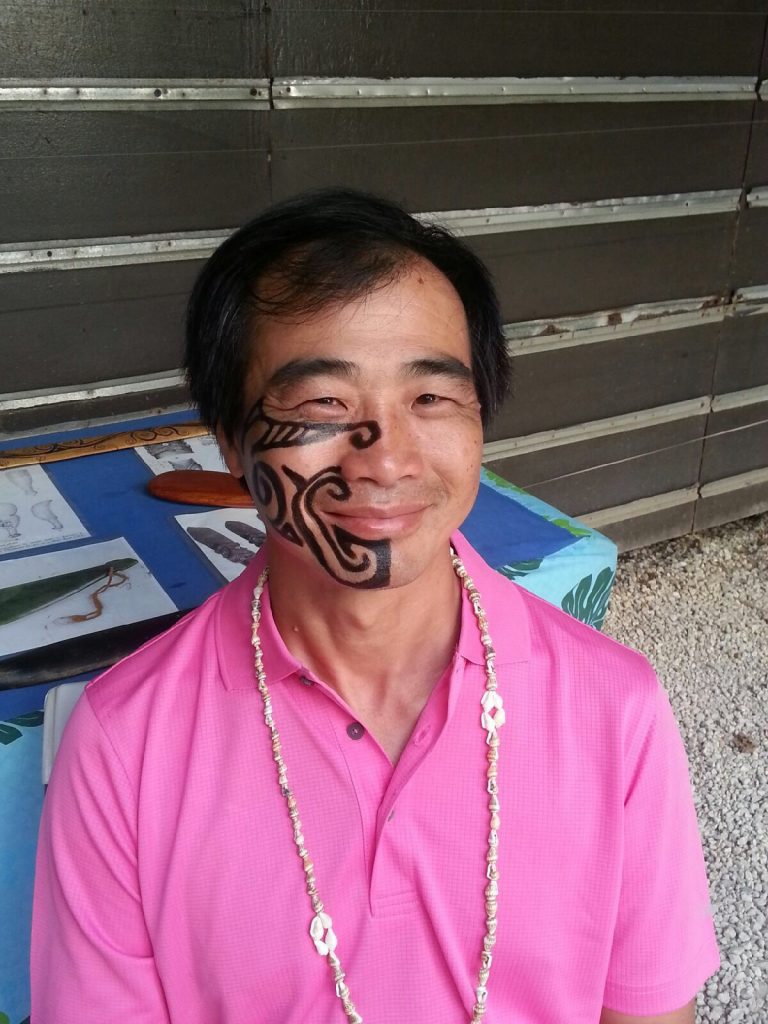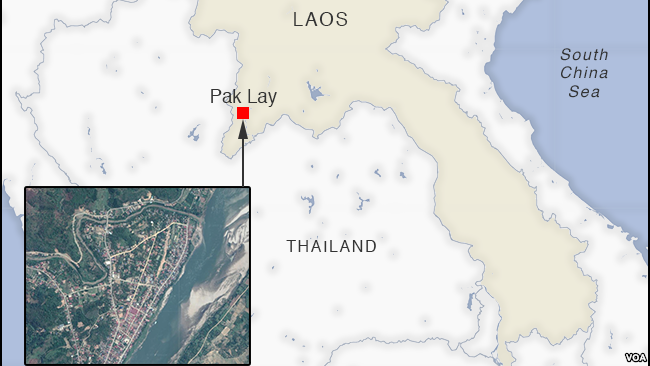
Overview
This website covers the early life of Chris Bounlath Phouasalith. Mr. Phouasalith is a successful businessman with humble roots as the son of a merchant in Pak Lay, Sainyabuli Province, Laos. Following the end of the Laotian Civil War, Mr. Phouasalith and his family initially fled Communist-controlled Laos for safety in Thailand. Not being able to resettle in Thailand, Mr. Phouasalith and his family spent years in Nongkhai Refugee Camp before immigrating to the San Francisco Bay Area, California, United States of America. Mr. Phouasalith then worked his way from a non-English speaking young adult with little technical skills to an auto body mechanic to a day trader in stocks to a real estate businessman. He currently lives in Collierville, Tennessee.
Early Childhood
“I was very little, that the free space that we could go to [run] around and the best part for me [was] going to the Mekong River and fishing and swimming and go hunting. Those my favorite and eating fruit like coconut and all sorts of fruit.”
Mr. Phouasalith’s favorite activities as a child
Chris Bounlath Phouasalith was born in Pak Lay, Sainyabuli Province, Laos as the second-youngest of eleven children. His father, Mr. Liam Phouasalith, ran a family-owned business as an import-export merchant with relatives in Thailand. As a child, Mr. Phouasalith most enjoyed various outdoor recreational activities near the Mekong River. Mr. Phouasalith then recounted his local school’s harsh physical discipline and exams. Mr. Phouasalith believed that the punishments imposed upon them originated from French colonial practices as the teachers “[taught] them to put [fear in their hearts], so [they were] afraid of higher authority all the time. Not [to] become independent [or] become bold [in their] thoughts.” The French imposed ruled Laos as a colony from 1863 to 1946 and as a self-governing territory within the French Union from 1946 to 1953. Mr. Phouasalith later clarified his remarks, stating that the teachers used these harsh measures both before and after the Pathet Lao seized power.
Fleeing Laos

A part of Thailand until 1904, Sainyabuli Province is geographically isolated from the rest of Laos due to the Mekong River. As a result, little fighting occurred in Sainyabuli Province during the Laotian Civil War. Most of the fighting in the Laotian Civil War occurred in the eastern parts of the country towards the Laotian-Vietnamese border. In fact, Mr. Phouasalith could remember only one battle that occurred upriver from Pak Lay. Despite the battle being out of view, Mr. Phouasalith recalled how the next day he could see dead bodies floating downriver along the Mekong River.
The Pathet Lao’s capture of Vientiane in 1975 led to the fall of the Royal Lao government and the establishment of the Lao People’s Democratic Republic. As a child, Mr. Phouasalith said he was not very aware of the changes in the local community imposed by the new Lao PDR government until it began to affect his family’s business. In his local school, Mr. Phouasalith remembered how the “Communists [would] teach children to be like patriots to them. By patriot, that [meant] to become like a spy like even though we [did not] know it [… Parents] could not express anything to their children because their children would talk, would go to school […, and the Communists] would ask [them] if [the parents] listened to the radio, in what language, and that’s a crime.” Mr. Phouasalith later learned that many of these parents and educated people were sent to hard labor camps or reeducation camps in the north of Laos with many dying in the camps. Tens of thousands of Laotians were imprisoned in these reeducation and hard labor camps for up to ten years after the end of the conflict. The Lao PDR also began to assert more control over the local economy. Mr. Phouasalith remembered how “[they could not] compete with the governments’ stores” as the Lao PDR would regulate the family’s business by banning certain products or regulating products’ prices to the point that it would not be profitable. Inflation of the Laotian kip also worsened under the Pathet Lao to the point that the currency had to be switched “at least three times in a few years.”
By the late 1970s, Mr. Liam Phouasalith decided it was time for the Phouasalith family to leave Laos for Thailand. Mr. Liam Phouasalith had previously fled Hainan Province, China after the Chinese Civil War. He used this experience to plan his family’s escape as he sent his eldest children to Thailand years before the rest of the family in order to gain Thai citizenship and contact relatives already living in Thailand. Initially, Mr. Liam Phouasalith also wanted the family to escape Laos individually before regrouping and reestablish itself in Thailand. Mr. Phouasalith remarked how his family was “unique from other families. Even before the Communists came, [his] family already scattered all over the country [due to school or work] so [they] hardly ever together.” This made it easier for the family to escape Laos. Mr. Phouasalith went over how his older brother Lenh escaped Laos by paying a fisherman to paddle across the Mekong River in the middle of the night despite threats from the army to shoot people who were trying to escape. At the time, Mr. Phouasalith attended a school in Vientiane that required the use of a boat to travel down the Mekong River. When the boat stopped for lunch, Mr. Phouasalith already knew the route and “just [started] walking from there to Thailand. [Took him] a day’s walk.” Since his escape from Laos, Mr. Phouasalith has never returned.
“I [didn’t] even dare to tell my friends where I [was] going. I used to go to school in Vientiane too during that time, and I remember that I wanted to give my soccer ball to my best friend and tennis shoes to my best friend before I [left]. That’s the only two things that were treasures to me. But I wouldn’t even dare to do that, afraid that they would think that I [was] leaving.”
Mr. Phouasalith’s Memories of Leaving Laos
Refugees in Thailand
“[It was] hard, imagine that within fifteen by ten or twenty by ten square [feet], that’s where we lived. That’s where we [ate], that’s where we [took] showers, and everything [was] there.”
The Phouasalith Family’s living conditions in Nongkhai Refugee Camp
Mr. Phouasalith and his family had difficulty resettling in Thailand. Mr. Phouasalith remembered how the “Thai police and the people [knew] that [they were not] Thai, but [they were] Laotian. And from time to time, they [would] come and blackmail us.” Thai and Laotian culture are extremely similar so it would be difficult to distinguish them apart from one another. Mr. Liam Phouasalith decided then to move the Phouasalith family into a refugee camp in order to “go to a third country.” Shortly afterwards, the Phouasalith Family moved into Nongkhai Refugee Camp. During the time, Thai officials were anxious at the massive influx of refugees streaming from Laos and quickly wanted to resettle them in other countries. Mr. Phouasalith remembered the terrible living conditions as their entire family endured cramped living quarters, little edible food, and no running water. Mr. Phouasalith “[had] to push a fifty-gallon barrel with a bicycle wheel on it about a mile to get water for [his] family.” The Phouasalith Family learned about the United States through Mr. Bounhom Phouasalit and Mr. Kao Phouasalit. The Phouasalith Family ultimately stayed in Nongkhai Refugee Camp for two years before immigrating to the United States.
Resettling in the United States
“[I had] to overcome all of [the language and culture barriers], so [I saw] that this land is plentiful, is very rich, and that [I] just [had] to go out and work for it and earn it.”
Mr. Phouasalith’s Work Ethic as an Immigrant
After resettling in the United States, Mr. Phouasalith went to school and work. Mr. Phouasalith remembered his family’s struggle to get out of welfare. Mr. Phouasalith’s family “[appreciated] it very much that [the government had] a safety net” but that they wanted to be able to support ourselves and to be independent. Mr. Phouasalith overcame a language barrier and culture barrier by moving to Pennsylvania for a while to learn American culture and improve his English. When he returned to San Francisco, Mr. Phouasalith attended a local community college before working in an auto body mechanic shop. He learned auto body skills from different owners and ultimately owned his own business. A friend introduced him to stocks and he quickly became a part-time day trader while running his auto body mechanic shop. Mr. Phouasalith ultimately sold both his stock holdings and his auto body mechanic shop to invest in real estate as he wanted to own physical property and have “money work for him, not the other way around.” Mr. Phouasalith currently owns multiple properties including a large apartment building in the Memphis, Tennessee region.
Further Readings
Burgess, John. “Refugees Pour Out of Laos, Seeking New Life.” The Washington Post, October 14, 1980. https://www.washingtonpost.com/archive/politics/1980/10/14/refugees-pour-out-of-laos-seeking-new-life/0b4780cb-d5e9-4a57-a8ae-fcb143a2232a/?utm_term=.26f475d4d2ab
Conboy, Kenneth. Shadow War: The CIA’s Secret War in Laos. Boulder: Paladin Press, 1995.
Pholsena, Vatthana. Post-war Laos: The Politics of Culture, History, and Identity. Ithaca: Cornell University Press, 2006.
Yang, Yao. The Latehomecomer: A Hmong Family Memoir. Minneapolis: Coffee House Press, 2008.
Image Credits
Google Earth
https://www.voacambodia.com/a/laos-dam-impact-assessment-plagiarized/4588398.html